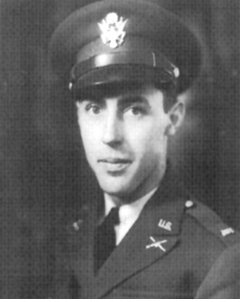Colonel
Paul N. Gillon
 Born August 29, 1907, in Warren,
Rhode Island, Paul N. Gillon graduated from West Point in 1933. Commissioned in the Coast Artillery, he served at
Fort Monroe, Virginia; Fort Story, Virginia; and Fort Kamehameha, Hawaii. In 1935, he was detailed to Ordnance
duty at the Hawaiian Ordnance Depot. Gillon left Hawaii in 1937 to attend the Ordnance School, a two-year course
that included training at the Massachusetts Institute of Technology, where he earned a Master of Science degree.
Born August 29, 1907, in Warren,
Rhode Island, Paul N. Gillon graduated from West Point in 1933. Commissioned in the Coast Artillery, he served at
Fort Monroe, Virginia; Fort Story, Virginia; and Fort Kamehameha, Hawaii. In 1935, he was detailed to Ordnance
duty at the Hawaiian Ordnance Depot. Gillon left Hawaii in 1937 to attend the Ordnance School, a two-year course
that included training at the Massachusetts Institute of Technology, where he earned a Master of Science degree.
In 1939, Gillon became Executive Officer of the Ballistics Research Laboratory (BRL) at Aberdeen Proving Ground (APG), and eventually became Assistant Director in 1941. He was responsible for the computing branch at BRL, which carried out the ballistics computations essential for preparing bombing tables and firing tables for artillery. With war on the horizon, he wisely foresaw the need to improve BRL's computing capabilities. He established a program with the University of Pennsylvania to train additional mathematicians and contracted for the Ordnance Department's sole use of the university's Bush differential analyzer. Gillon improved the efficiency of this analyzer and a similar one at APG through the use of IBM punch-card machinery.
In 1942, Gillon became Deputy Chief, Research and Materiels Division, Research and Development Service, in the Office of the Chief of Ordnance, Washington, DC. He was instrumental in gaining approval and funding for the development of the world's first electronic computer, the Electronic Numerical Integrator and Computer (ENIAC), a machine capable of carrying out ballistics computations in a fraction of the time of existing mechanical calculators. He also gained approval for development of a second machine, the Electronic Discrete Variable Computer (EDVAC). In 1944, Gillon went to the Pacific where he trained and organized technical intelligence teams to collect and analyze enemy weapons and equipment in the Central Pacific Area. After the war, he returned to the Office of the Chief of Ordnance as Chief, Research and Materiels Division, where he initiated a program to develop an improved computer, Ordnance Variable Automatic Computer (ORDVAC), which in 1953 went on line at APG, joining its predecessors, ENIAC and EDVAC, as part of the world's first computer center.
Gillon next served as Director of Research, Development, and Engineering at Watertown Arsenal from 1946 to 1950, where he initiated the Army's titanium program and developed toughness requirements for steel plating. From 1950 to 1954, Gillon served as Chief, Program Coordinator, Research and Development Division, Office of the Chief of Ordnance. His final assignment was as Commander, Office of Ordnance Research, where he oversaw a $4 million research program carried out at 125 colleges and universities. Colonel Gillon retired in 1956 and died in 1996 in Charleston, South Carolina. Without his diligence and foresight, the Army, in World War II, would not have had the firing tables crucial to accurate bombing and artillery fire, nor would the Ordnance Department have led the way in electronic computer development in the 1950s.